Prior to COVID-19, of those employed, 32% worked at least 1 day a week from home. According to an August-September IDC survey, with COVID-19, another 39% moved to work from home. Over half of all those working from home say it is better than working from the office. However, first-timers are feeling the pain of adjusting.
Find out more about their pain points and the implications and opportunities for employers and tech vendors.
Most See More Advantages than Drawbacks
Over half (56%) say that working from home is better than working in the company’s office while another 22% say it’s about the same. 21% say it is worse.
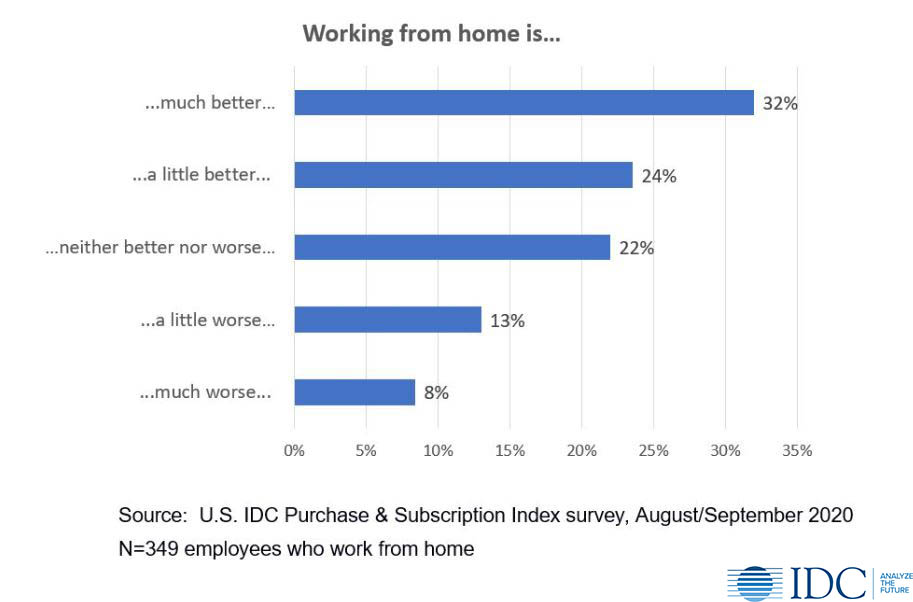
It’s worth understanding the pros and cons from workers’ perspectives. They tend to be the same across both established and first-time work from home employees.
Not Commuting and Increased Freedom are Major Benefits
Not commuting is a double win! Those who work from home save gas money and avoid wasting time commuting. Nearly half say that working from home gives them greater freedom and flexibility – which they like.
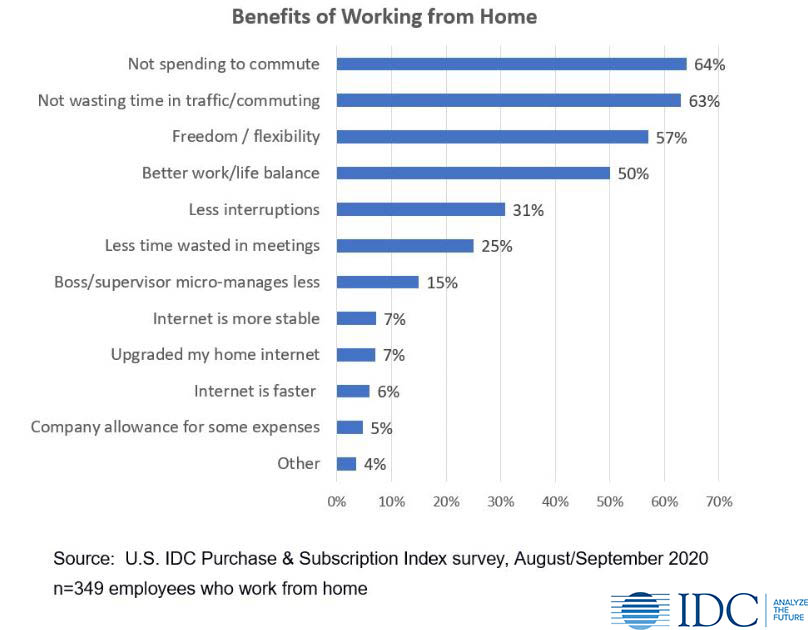
For some, this includes a sense of better work/life balance. A good number also describe their time as more productive at home, with fewer interruptions or less time wasted in meetings.
Feeling of Isolation, More Difficult Teamwork, Blurred Work/Personal
On the downside, workers feel isolated at home, contributing to their sense that collaboration and teamwork are more difficult. For many, the line between work and personal life blurs.
Interruptions and other responsibilities also cut into their ability to focus and be productive, leading them to work longer and longer hours. To make matters worse, 1 in 5 report they end up spending their own money on things the company should pay for.
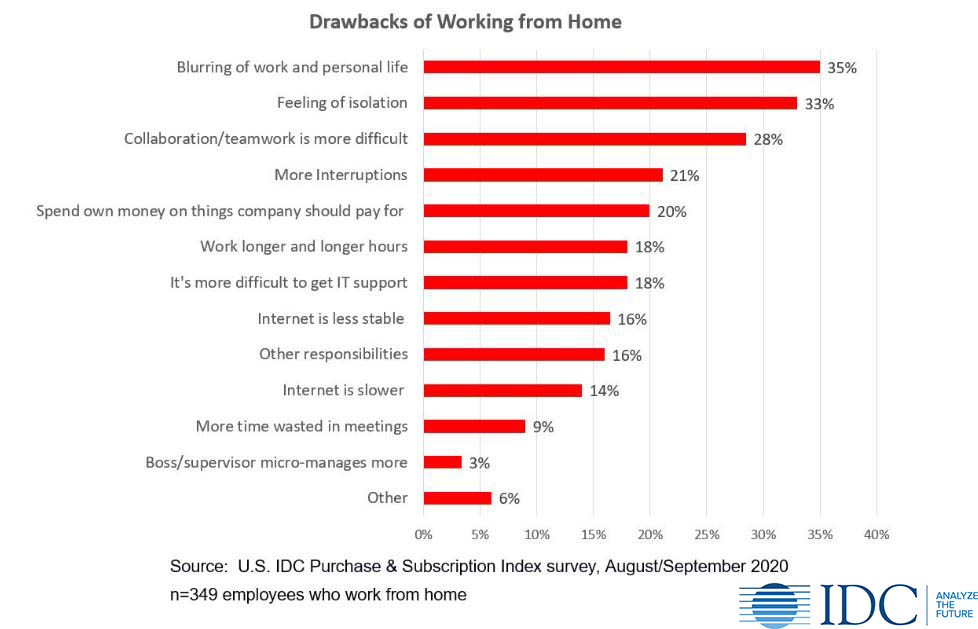
Feeling of Isolation is Real for All
It’s worth noting that the feeling of isolation is not limited to first-timers or to those who have a negative view of work from home. It is also prominent among those who say they prefer working from home over the office; 38% of those who prefer work from home cite the feeling of isolation as an issue.
First-timers are Positive, but Less So than Established WFHers
Over half (53%) of those working from home for the first time say it is better than working from the office compared to 60% of those with an established work from home routine.
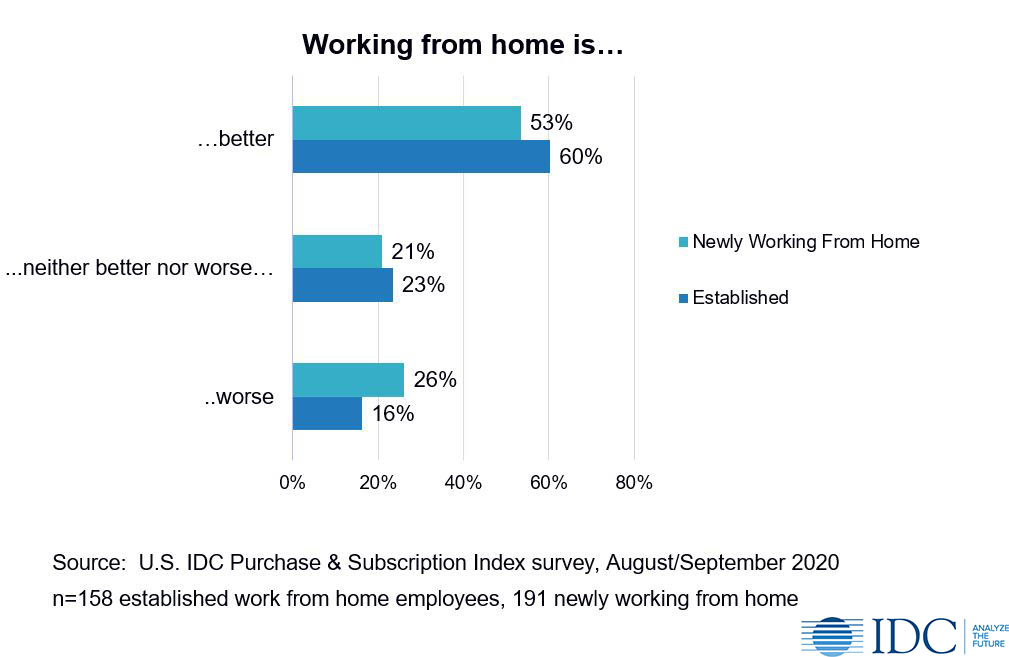
Only 1 in 6 workers with an established WFH routine say it is worse than the office. Among first-timers this climbs to 1 in 4. Why?
Pain Points are More Intense as First-timers Adjust
Work from home was forced upon workers and employees by the reality of COVID-19, with no time to prepare. Nobody was ready for this massive shift from the office to home. Not to mention the simultaneous reality of school from home, with kids competing for time and bandwidth. There was no playbook.
First-timers experience the same pain points as their established work from home colleagues – but feel them more intensely. In particular, they feel the pain in their attempts to collaborate with other team members.
Many also find that getting IT support for their set-up – which is slower and less stable – is much more difficult at home than in the office.
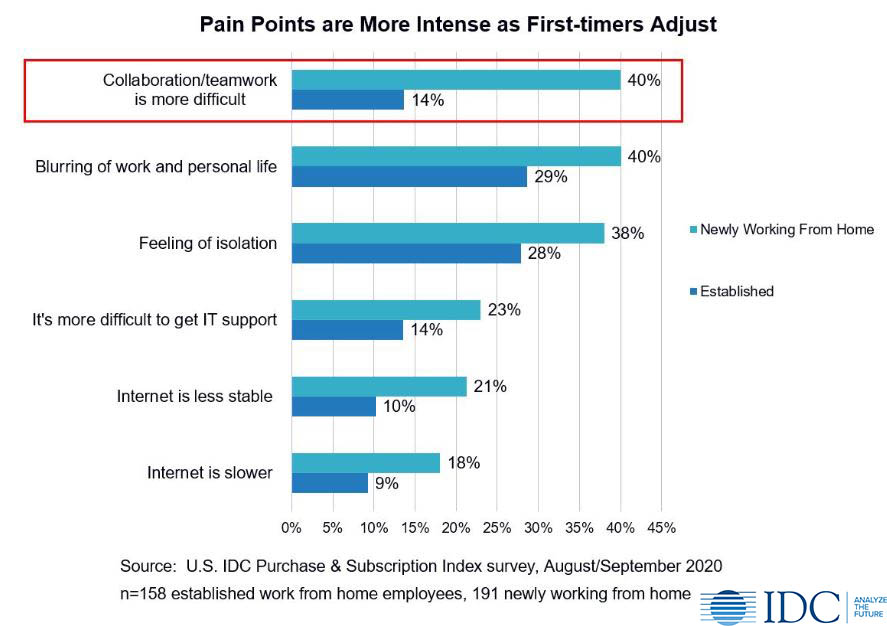
Employees are Not the Only Ones to Feel It
After the immediate relief that CEOs felt when they were able to see their businesses still functioning, some are now questioning the sustainability of the work from home paradigm – at least for certain kinds of work and activities.
Like employees, CEOs confirm that collaboration and innovation are more difficult with the changes. Training and development of young employees is also more difficult.
A Slow Return & Uncertain Future
Meanwhile, the return to the office is slow. Among those working from home for the first time as the result of COVID-19, 74% report that they have not returned to the office. Most companies have not yet announced their plans or made a final determination on who will work from home, instead preferring a prudent “wait and see” attitude.
Key Takeaways & Actionability for Consumer Marketers & Employers
- Most say working from home is better – yet it’s not a slam dunk.
- The feeling of isolation is real.
- Employers should find ways to quickly share relatable experiences; they are even more important than written best practices.
- Once we’re past COVID-19, where possible, employers should look to leverage a mix of in-office and work from home.
- Regardless, new functionality is needed in collaboration platforms
- The most important seems to be the ability to replicate the spontaneous dynamic of “running into each other.”
- It’s worth investing time to better understand what companies need to be able to better innovate while working virtually. Innovation is too critical to companies to be ignored.
- Can Zoom, Teams, Slack, others provide this, while avoiding some of the bad behavior reported on some platforms?
- The feeling of isolation is real.
- Virtual reality offers potential, but the hardware and software platforms required to make this work are not yet fully mature.
- With increased work from home, the line between enterprise and consumer expenditures will blur further.
- Marketers must pursue “both/and” approaches and should begin to consider the ramifications of continued WFH and the stories they tell to reach these customers.
- This will mean significant opportunity in tech-enabled services (ex. gaming, OTT, cloud storage, cloud music) and software (collaboration, anti-virus, parental controls).
- This is in addition to the “usual suspects” in devices (ex. PCs, tablets and the full range of accessories for gaming, phones, and virtual communication).
- This means big opportunities for PC, tablet, phone, and wireless providers among others.
- Enterprise partnership contracts/agreements could provide significant upsell opportunities to consumer households for personal devices or services.
- Technical assistance/support is another area of opportunity.
IDC’s Consumer Technology Strategy Service (CTSS) leverages a system of frequent consumer surveys to provide B2C marketers with the full view of the consumer they need to anticipate and meet changing consumer needs and to outperform their competitors. This includes robust monthly data, timely insights, quarterly webinars, and ongoing analyst access.
In addition to my syndicated service, I work closely with clients on custom research projects and consulting. Find out more here:
From increased remote work to changing school and family needs, the consumer technology market is constantly adapting to the COVID-19 pandemic and recovery efforts. See what the U.S. consumer technology landscape looks like heading into Q4 with our 10/15 webinar. Join us at 12pm ET to explore the most important consumer trends for Q3 and how consumer sentiment and behavior have progressed with the continued evolution of the COVID-19 pandemic. Register:




